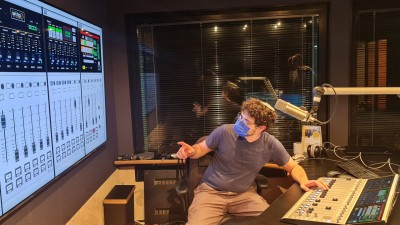So what is Digital Television - Part 1

Author: Bob Pank#
Published 1st July 2011
It is tempting to think of “digital television” as something very scientific and even complex. But when we view the end result, we find something very familiar; something television engineers have sought since the very beginning…an experience that just keeps getting better and better…quality video and audio conveying great entertainment, sport, movies, and news to the viewing audience. The only thing new in digital television is the way the message gets from here to there.
Does it really matter how the message travels? The viewer at home probably doesn’t care what path the signal takes, be it terrestrial, cable, satellite, IP or mobile, but they benefit from digital television’s improved performance without knowing the details. Ah, but the science…. that’s where the fun comes in. Those of us involved in the technical side of television do care; and we all benefit from the significant advances in television science over the past 60+ years… and in particular the advances brought about by digital television over the past 20 years.
Programme video, digital audio, and associated ancillary data signals together make up the digital television signal. In the analogue world of television, video and audio can exist in totally separate paths from source to the home television receiver. Digital signals however may be organised with much more freedom, with video, audio, and other signals working together as a stream of data. All we need to know is how the data is organised to pick out what we want.
Traditional television
We can call analogue video and analogue audio the elements of traditional television. But it is important to realise that we are still trying to accomplish the traditional goals…and maybe more. Digital television builds on analogue, and our understanding of digital television builds on what we already know about analogue television. Light into the camera lens and sound into the microphone, are still analogue. Light from the display and sound to your ears are also still analogue phenomena.
We already know that analogue video is a “sampling” of light values; values of brightness represented by a voltage. And additional information provides the colour of the samples. The samples are synchronised through the transmission system to reproduce an image of the original scene on our display. Analogue video travels as a “serial” stream of voltage values containing all of the “data” necessary to make a picture when the receiver knows what to do with the information. So you can see that by just substituting a few words, and by just doing a few things differently to take advantage of what we have learned over the past fifty years, we can understand that digital video is really not very different to analogue video.
So, if we start with analogue light and end with analogue light, why use digital video at all? In many cases, the camera sensor is still producing analogue video, but it is now common to almost immediately convert the varying analogue voltage representing the instantaneous value of video to digital for handling with essentially no degradation. In some cases (such as computer-generated video or graphics), the video will start out in digital format, and with the new digital television systems, it can reach the display without ever going to analogue.
We can still send and receive television signals via analogue PAL, NTSC or SECAM transmissions, but we are already using digital transmissions to convey higher quality, more efficient television signals to the home. Digital television is an available part of everyday life. Some of us will use it and contribute to its improvement. Some of us will take advantage of it without needing to know the details.
The “New” Digital Television
Digital signals have been a part of television for many years, at first buried inside equipment such as test signal and character generators and later throughout entire systems.
Digital video is a simple extension of analogue video. Once we understand analogue video, it is easy to understand how digital video is created, handled, processed, and converted to and from analogue. Analogue and digital video have many of the same constraints, and many of the problems that may occur in the digital domain are a result of incorrect analogue source video. Therefore, it is important to have standards to reference for the design and operation of both analogue and digital video devices.
Numbers describing an analogue world
Early digital video was merely a digital description of the analogue PAL or NTSC composite analogue video signal. Standards were written to describe operating limits and specify the number data describing each voltage level and how each number was generated and recovered. Because of the high speed of the data, it was common to handle digital video data internally on an eight- or ten-bit bus, and initial standards described a multi-wire external connection as well. The standards also described certain ancillary and housekeeping data to synchronize the receiver and the transported data, and to permit additional services such as embedded audio. Later, as higher processing speeds became practical, a single wire composite serial interface standard was developed. In its basic form, digital video is a numeric representation of analogue voltage, with number data occurring fast enough to accommodate changing video and necessary ancillary data.
Next time Richard will explain component digital video, RGB component and gamma correction





























